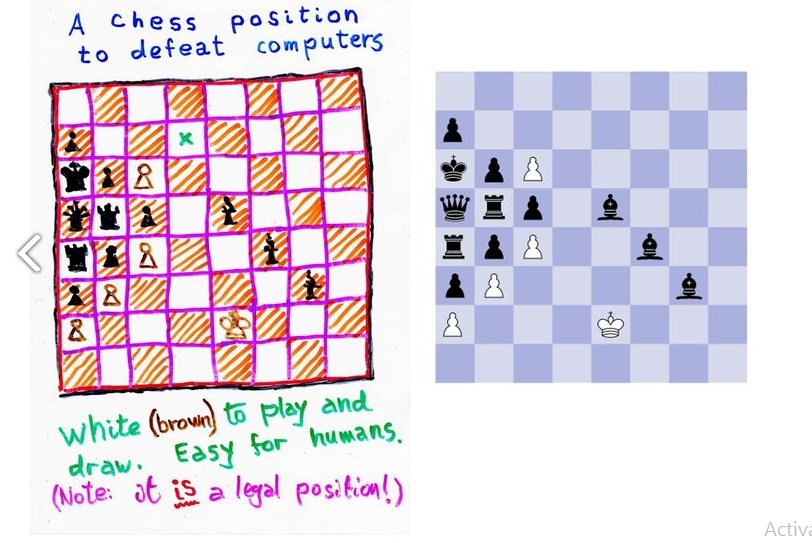We have recently heard or read how some of the best Go and poker players have been defeated by artificial intelligence. It seems that the machine always defeats the human ingenuity. But there is still a loophole for hope, and it is in a chess play that has become the last bastion of the pride of our species.

Actually, more than a play is a riddle. It was designed by Roger Penrose to try to find out what differentiates humans from machines.
The question raised by the riddle is: “White play and do not lose.” But how?
Black appears to have superiority, and so it is, at least numerically. But, as the pieces are arranged, the white ones only have to be limited to move their king avoiding that the bishops eat it (thing quite simple). And so, if in 50 moves no one eats a piece, the game is declared in tables. Even if the player who manages Black makes a mistake, White can checkmate.

It is proven that a good chess player (at the level of simple amateur) can see the solution in a few seconds. While the computer needs to take more time to analyze all the possibilities of movements of the pieces.
In the end, the computer reaches the same conclusions as the human player (therefore, it is not completely true that he can not solve the move), but the human is able to do it with more speed and agility.
Now the members of the Penrose Institute in Great Britain have recovered this riddle created by their teacher to use in an experiment in which they pretend to reveal how they produce those moments of inspiration that sometimes characterize us.














